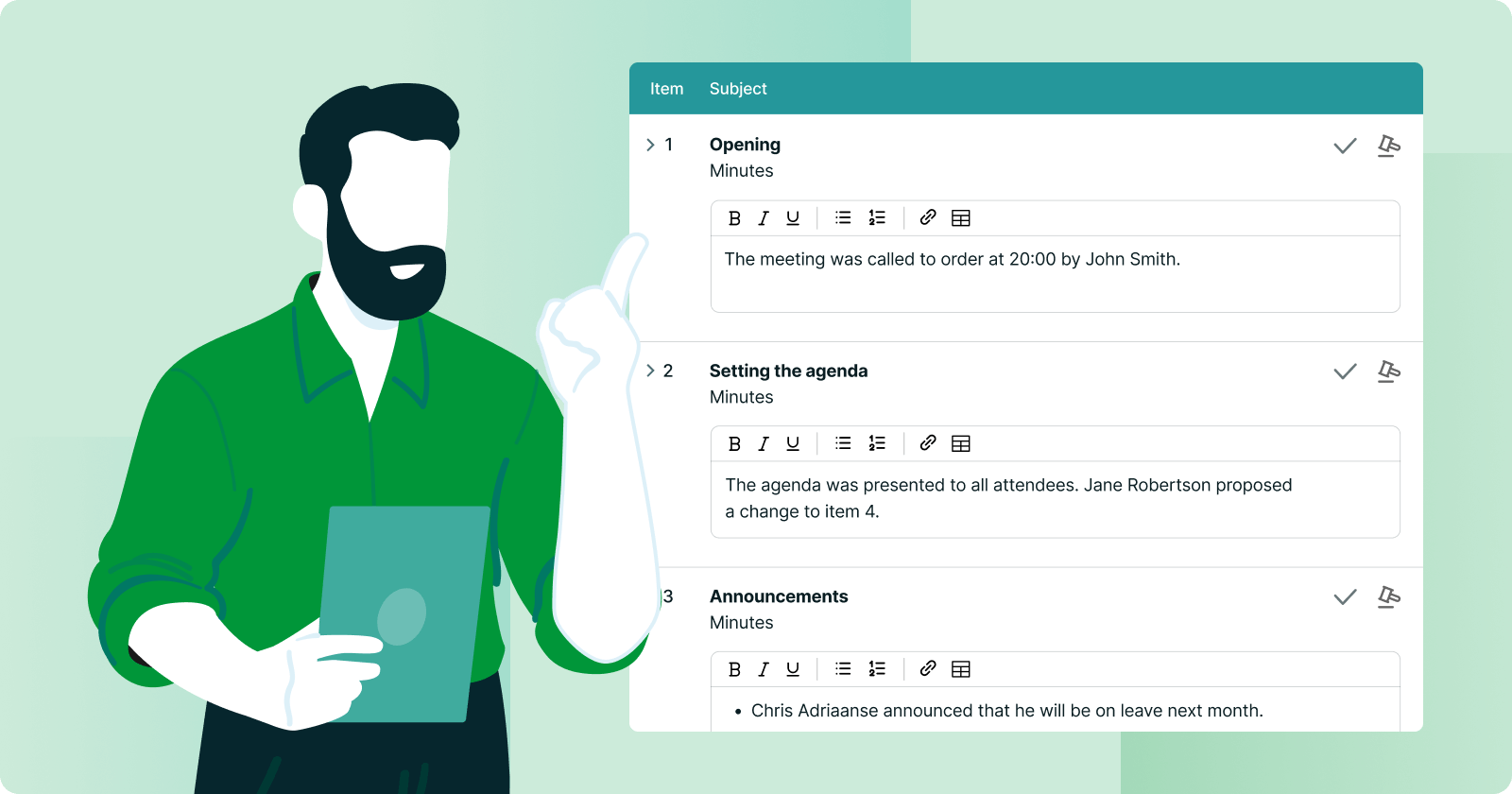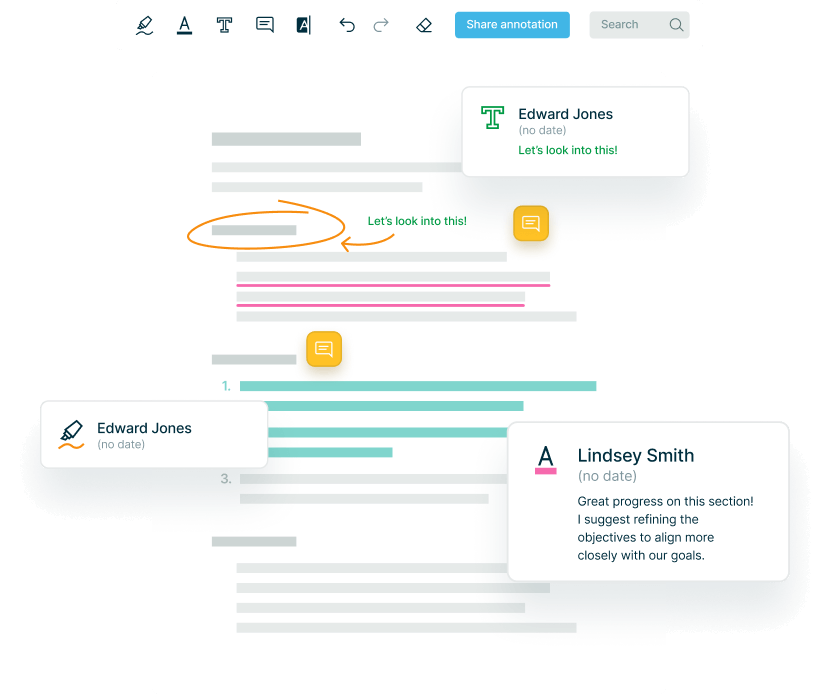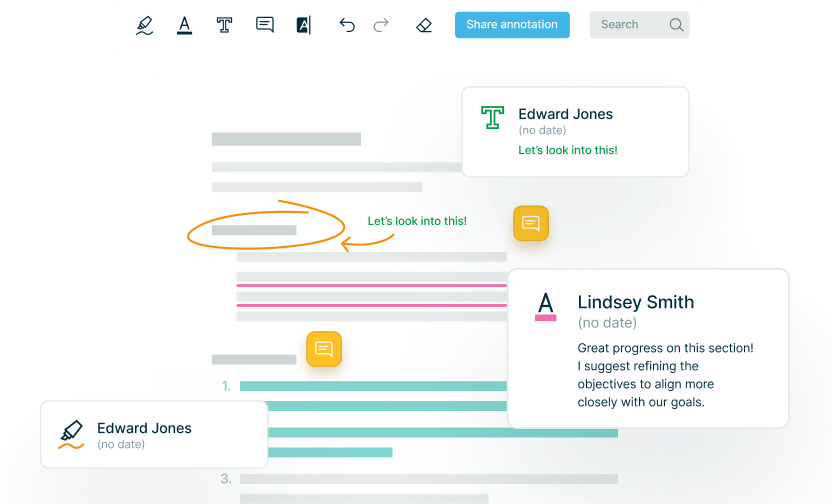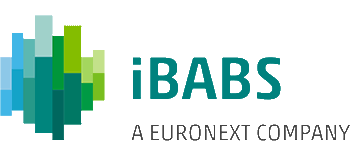What are meeting minutes?
The meeting minutes are a document that records the events that took place during a meeting. They are used by companies, non-profits, medical bodies, government organisations and any other sector to provide written evidence of elements such as:
- Issues discussed
- Motions put forth
- Decisions made
- Actions agreed upon
The minutes are usually distributed amongst attendees afterwards and are approved either before the next meeting or early on in the next meeting. If there is any discrepancy between the content of the minutes and the memories of attendees, they should request the minutes be updated accordingly with the agreement of the other stakeholders.
The organisation should then keep them on file for future reference and, in the case of some types of formal meetings, as a legal requirement.

Types of meeting minutes
When you use iBabs meeting management software, you can create your meeting minutes directly within the platform. Record votes, proposals, decisions, and action items and easily export everything into a branded document. With iBabs you can turn minute taking from an all-day project into a straightforward one-hour task!


Who takes meeting minutes?
It is important to have a designated minutes-taker for a meeting, but there is no one person who specifically must take meeting minutes. In some situations it is the company secretary, in others it is the executive assistant or the administrative assistant, for example. For the purposes of the meeting, they might be referred to as the meeting recorder or simply as the minute taker.
The nature of the meeting has a bearing on who takes the minutes. For informal meetings, it might just be one of the attendees who takes minutes, as well as contributing to the content of the meeting.
The person taking the minutes should be able to follow the proceedings and have the ability to accurately represent the discussions, debates, decisions and action points.
That person will also usually be responsible for writing up their notes into a more formal format and distributing them to meeting attendees.







